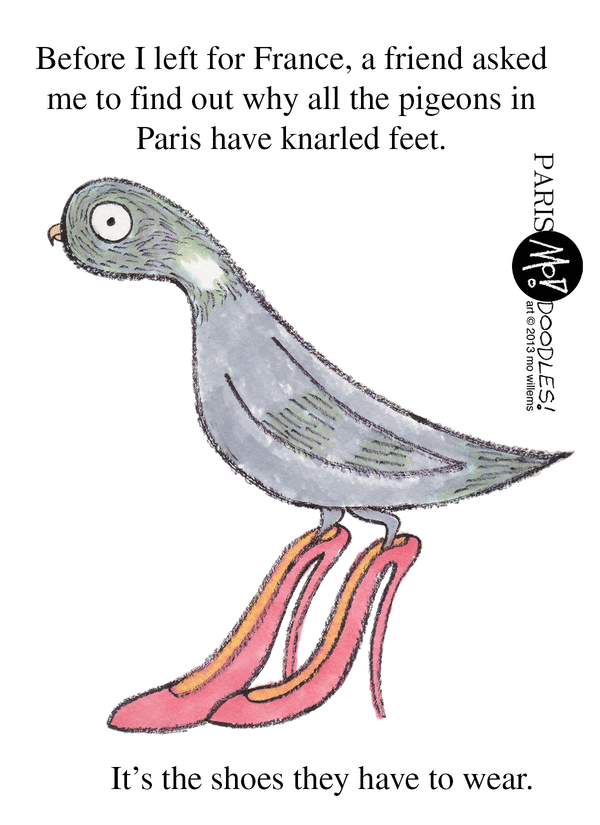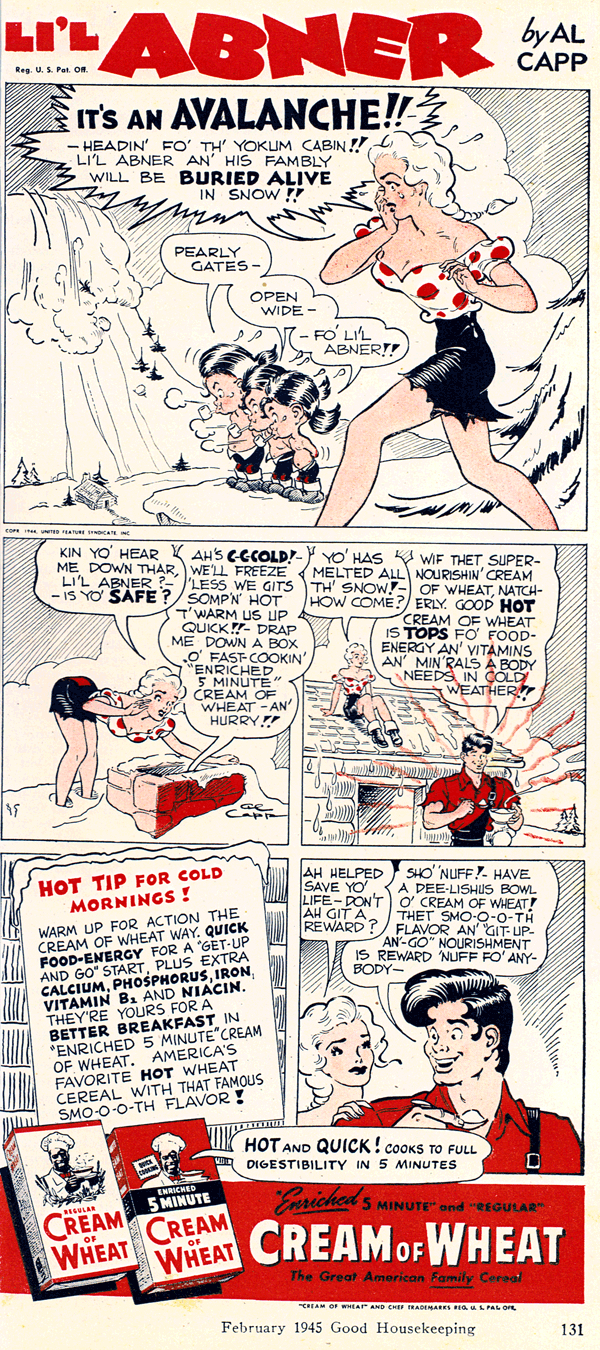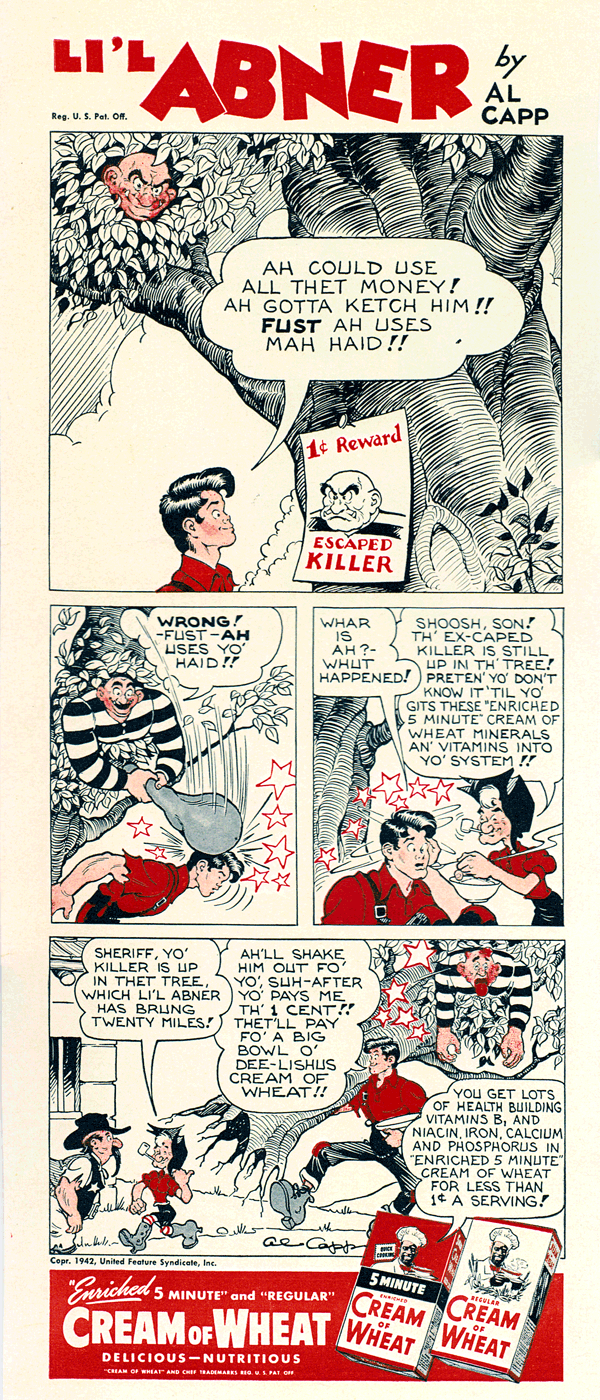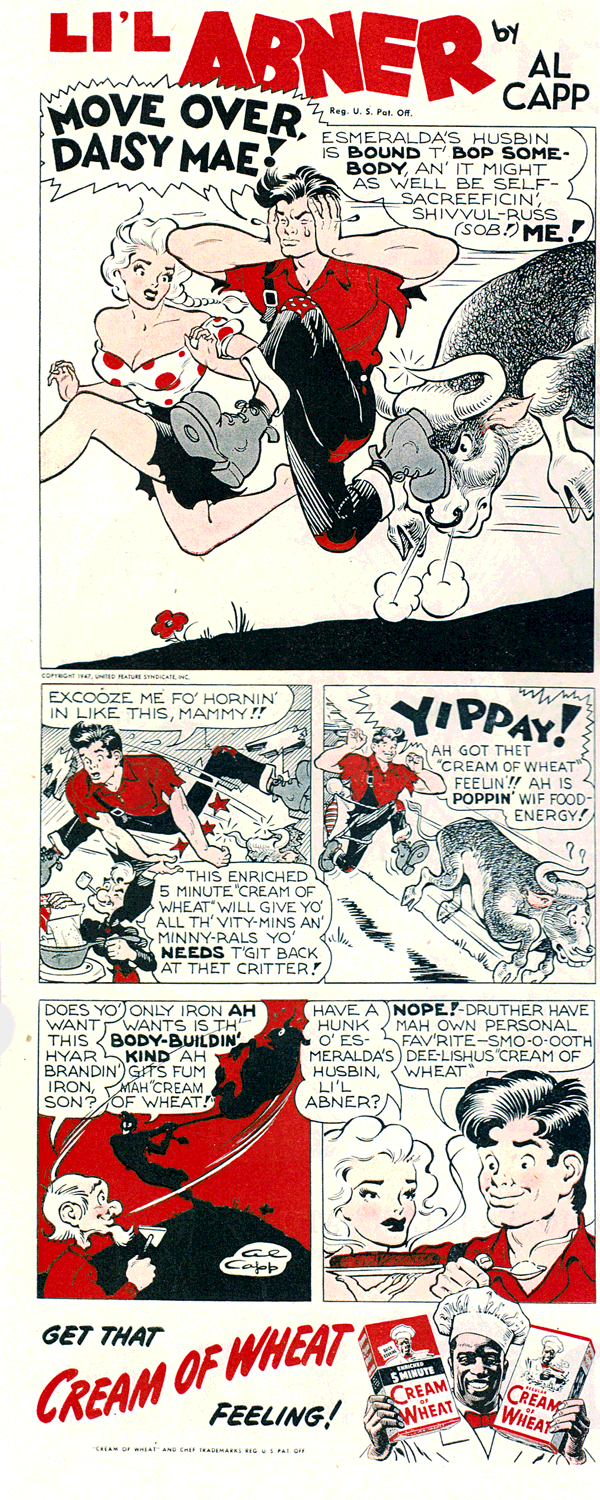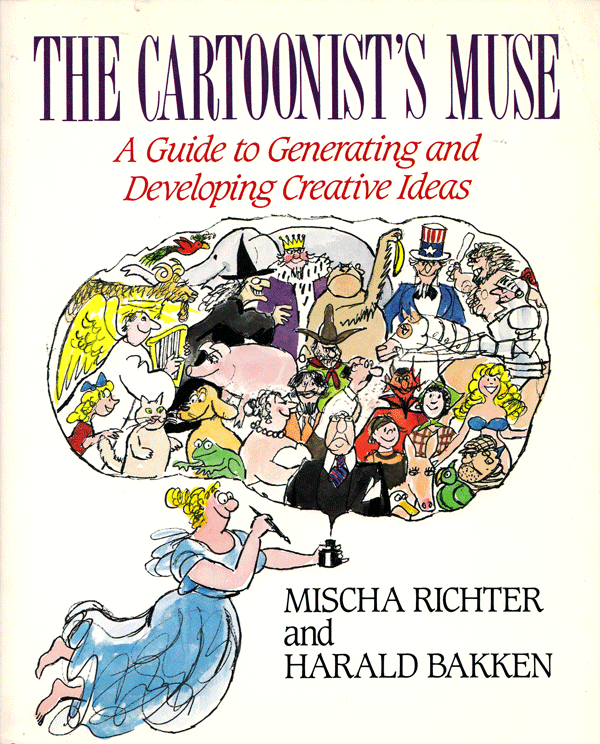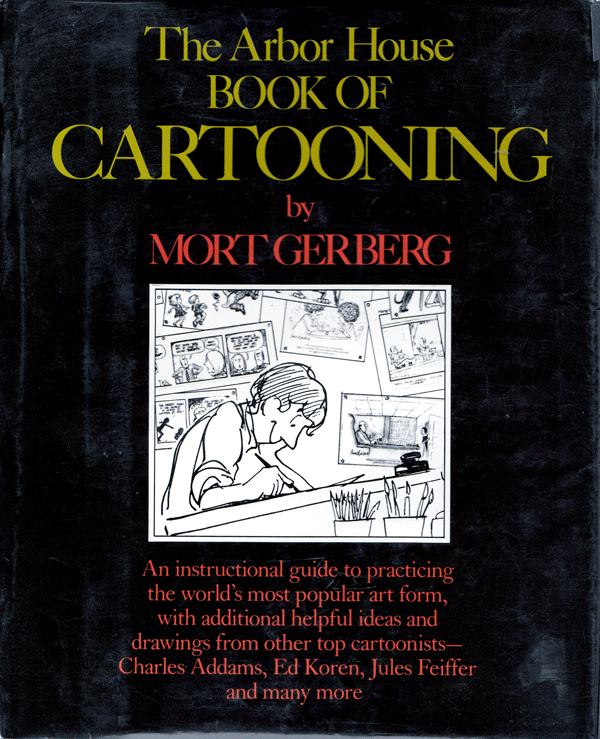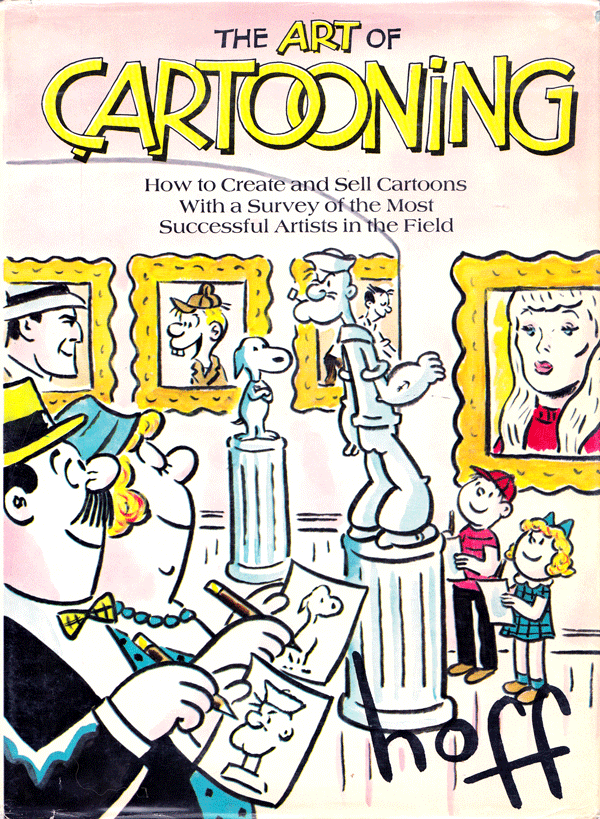Chon Day. If you love cartoons but that name doesn’t ring a bell, this is your lucky day. Day is one of my absolute favorite cartoonists; I can’t think of a week that goes by that I don’t grab one of his books for inspiration, to marvel at his beautiful economic line, or just a quick laugh.
Here are just a few cartoons from his 1945 collection, I Could Be Dreaming, that I know are just going to knock your socks off:
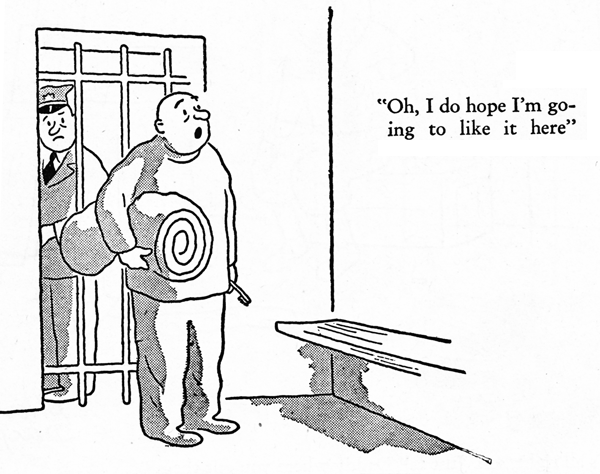
Day’s art is great, and it reads immediately almost 70 years later, but what stands out to me with this cartoon is the wording of the gag. I can imagine this caption written by lesser cartoonists going any number of ways:
- “I sure hope I’m gonna like it here.”
- “Boy I hope I like it here.”
- “I don’t think I’m going to like it here.”
But the “Oh, I do hope…” is the perfect contrast to the character and scene and it reminds you how much time and effort it takes to get a single sentence just right.
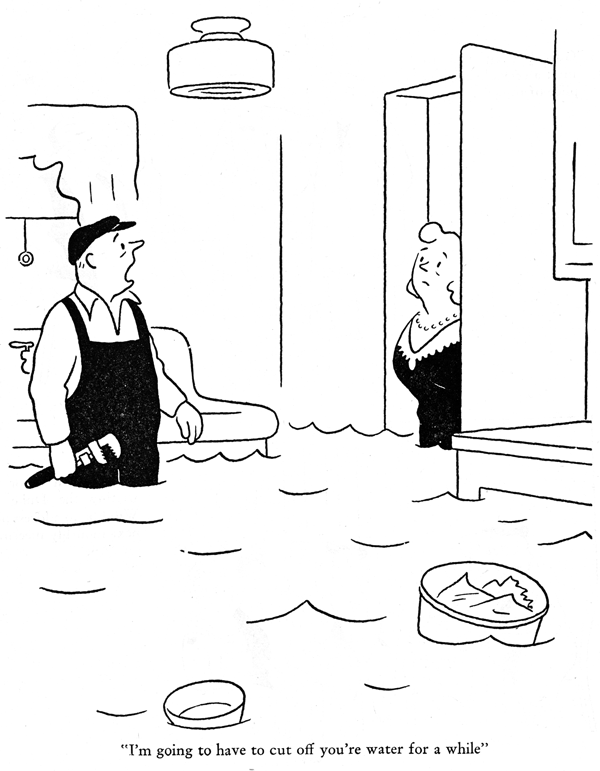
Another good gag, but this time the art really shines. Look at how few lines are used to get the idea of the kitchen across. And I know I’d be tempted to have something like “Ace Plumbers” on his overalls, but Day’s pipe wrench tells you exactly who this person is. And the expressions on the characters faces – they both know what’s happening, but you get the feeling that each is trying not to upset the other. Amazing.

I think Chon Day was at his best when he worked without a caption, and let me tell you, that’s not easy to do. When you look at this cartoon it reads immediately as Ship Christening Ceremony, but with only just enough visual cues to do so. There’s the officer’s uniform, the bunting, the rivets, and, of course, the dowager and bottle. And what a wonderfully silly idea!
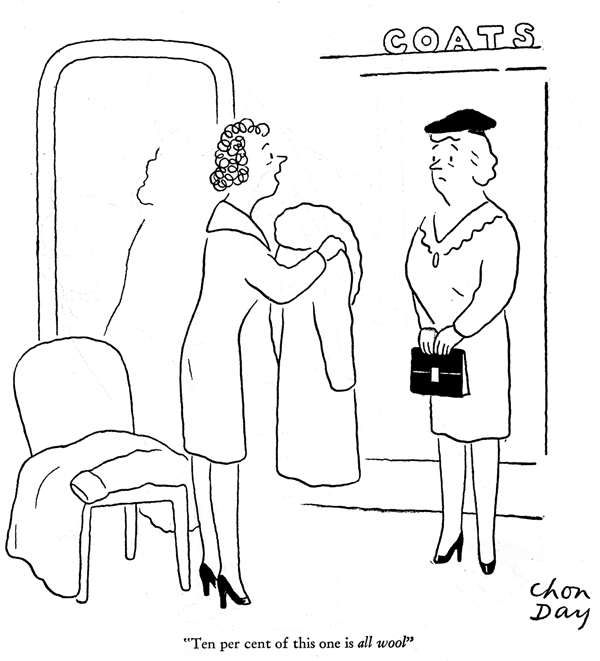
This cartoon is all about the caption for me. It’s easy to read this as “Ten percent of this is wool,” and, in fact, I distinctly remember reading it that way when I first read this book. But then you wonder where the joke is. Is it the coat? The women? And why is the caption worded that way instead of “This is ten percent wool?” Then you reread the caption and are rewarded upon close examination. Even the italics are perfect.

Although technically not wordless, here’s another example of how great Chon Day was without a caption. I love how it reads left to right, then left again: man on stilts, angry woman, black eye. And Day draws your eye where it’s needed with the wash on the window shade, and the top hat and tie. One more thing too, mainly because I still struggle with it, look at how masterfully the brick is suggested with just a few lines. Wow.
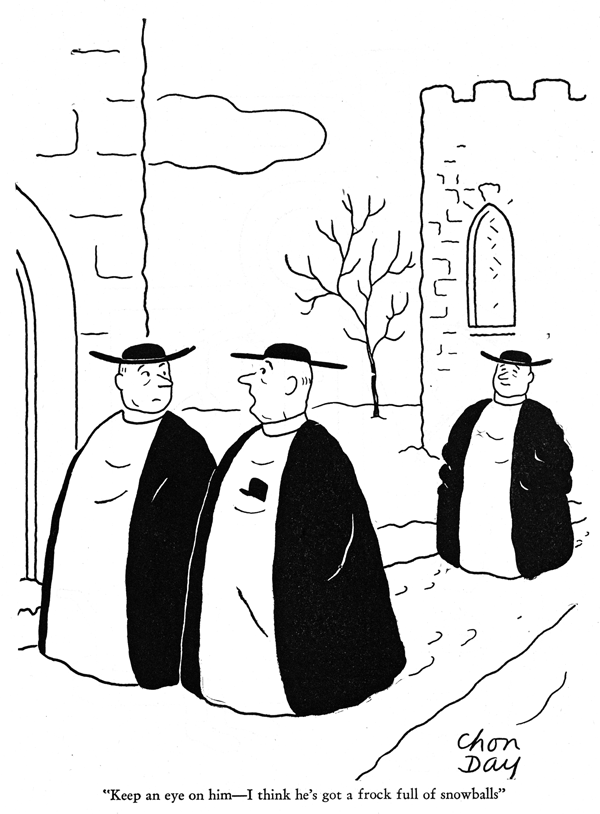
I don’t know if this predates Brother Sebastian, but it’s a wonderful example of how Chon Day could be funny and gentle at the same time. I personally stay away from religion in cartoons because a) I’m worried about offending, and b) I don’t know enough about it to do it well. But Day found so much to play with. And, again, look at how much is conveyed with so few lines: the tree, the brick, the stained glass…

I thought this went especially well after the previous cartoon because it’s kind of dark and ominous. I mean, it’s a guy with a net luring a boy into his shop! I’m assuming he just wants to keep the boy and make him work there, but still… you just could not do this cartoon today!
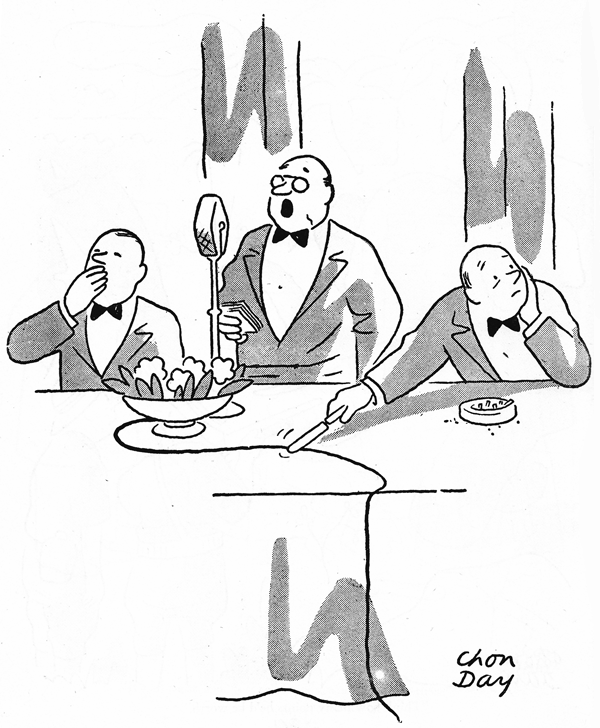
I’m going to end with what I think is basically the perfect Chon Day cartoon; it’s subtle, relatable, deftly drawn, and still hilariously funny, even today. Perfect.
Want to check out more Chon Day? Here’s some additional reading:
- Mike Lynch’s take on I Could Be Dreaming
- Insomnia Notebook’s Less is more: Cartoons of Chon Day
- Bob Mankoff’s perfect Chon Day cartoon
Also, you can pick up these Chon Day collections:

